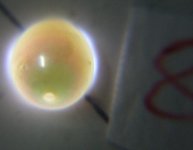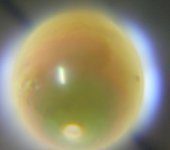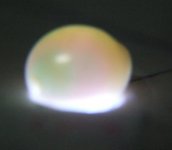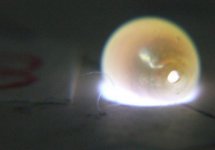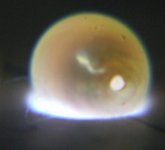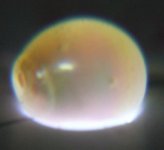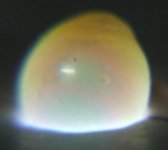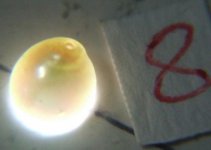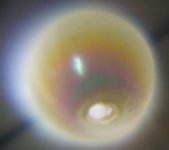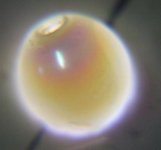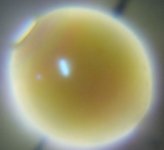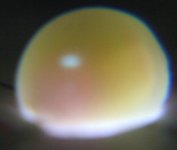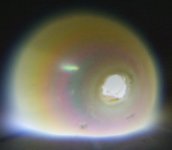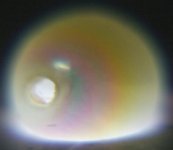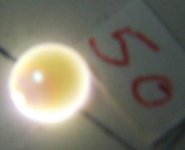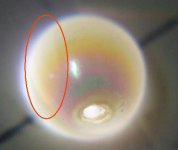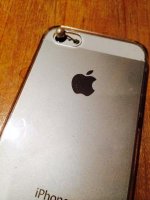Wow Dawn, you've been busy!
Both appear beaded. I'm not seeing pronounced contrasts in the layers of the bead similar to washboard mussel, but I am seeing features of pigtoe mussel nuclei. Several of those beads in my batch have patches of calcite similar to ones shown in these images. I'll show you a comparison next week, when I get back to my stash of nuclei in the lab on Clayoquot Island. I'll candle some.
Another observation, similar to one I made on Andrea's pearl. It's more apparent on one, less on the other, but both present with color shifted patches and stippling just below the surface at equal depth. I don't see any deep inclusions. I don't see any initiating events other than what appears to be graft tissue in the lobe of the teardrop pearl. Again, near the surface...not deep in the middle.
Likewise, I see a contrasted ring near each hole. A drilled natural pearl would not present in this manner.
To expand a little on these views, let's discuss conchiolin for a moment. Conchiolin is substance created by mollusks which contains proteins and sugars. It's laid up by epithelial cells adjacent to the cells that lay up aragonite. In juvenile growth, it's present in greater volume than mature layers. Remember we discussed overmaturity a while ago? Overmature pearls have very thin layers of protein while aragonite and calcite predominate. When we have a view of cross sections, dark contrasts indicate protein content. If there is a ring around the hole, that ascertains the pearl is cultured, because the higher concentration of conchiolin is just below the surface, not at the center of the nucleus.
Again, as I told Andrea, I don't enjoy being spoil-sport, but this is a learning experience and we've advanced a method that helps all of us better understand the differences in pearl origin.
 Digital micro x-radiography is nothing like ordinary x-rays with film - then ramp that up exponentially with the CT - Whoop!
Digital micro x-radiography is nothing like ordinary x-rays with film - then ramp that up exponentially with the CT - Whoop!

